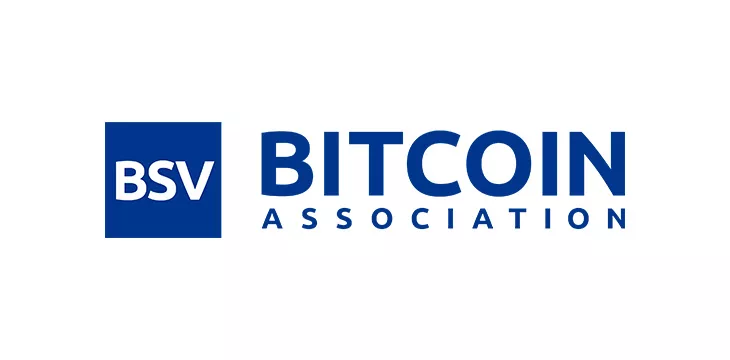|
Getting your Trinity Audio player ready...
|
— BSV Association (@BSV_Assn) April 18, 2023
The Bitcoin Association held a Twitter Space with CEO of Tokenized, James Belding, prompting the community likely spurned by the recent uptake of Ordinals across UTXO-based blockchains, including the novel 1 Sat Ordinals variant recently deployed on Bitcoin SV (BSV).
I’d love to join a ‘token panel’ Twitter space with the key proponents of all the token protocols/platforms on BSV.
Everyone would be welcome to join and ask questions.
Who should moderate ? Reply with suggestions.
Like & retweet if this is interesting to you.
— James | Tokenized.com (@JamesBelding) April 11, 2023
The roughly two-hour discussion led with proponents of various protocols deployed on BSV, Tokenized, Elas, RUN, STAS and 1 Sat Ordinals speaking about what a token is, how important the issuer is and why various protocols are required depending on the nature of the asset.
James and Brendan Lee, founder of Elas, discussed how single-use tokens such as coupons would likely not make sense to deploy on 1 Sat Ordinals or STAS. Ordinals take a colored coin approach of representing an immutable, on-chain asset via a single satoshi, whereas coupons are ephemeral and have no need to live forever on-chain. Additionally, a good point was raised that these satoshis need to be repurposed at some point, which of course is always possible regardless of the script used to lock the satoshi.
For example, STAS takes the approach of backing an asset with one or many satoshis, but TAAL Head of Product Thomas Giacomo confirmed that they can always be melted down to claim the satoshis out for whatever reason. One such reason is that the market value of the satoshis could exceed the value of the asset, akin to a scenario where the market price of gold rose such that people would consider melting their jewelry down and selling it for a profit.
The theme of the conversation was how BSV had not yet consolidated on a single token protocol like Ethereum with ERC-20 and ERC-721 did, and how BTC are attempting recently with BRC-20 and Ordinals for fungible and non-fungible tokens (NFTs), respectively.
Founder of RUN, Brenton Gunning spoke about how his system was pushed to its limit by CryptoFights, a PvP game built on BSV and how he thought its challenges manifested as a result. He went on to mention that because BSV is so scalable, unlike other chains different token solutions needed to be attempted so that market participants could efficiently choose which one works best for their use case.
Overall, he felt that his company ending support of RUN was a positive development for the BSV ecosystem in the sense that better solutions would have an opportunity to emerge, being able learn from RUN’s inefficiencies such as 1 Sat Ordinals.
Toward the end, speakers engaged in a back and forth with some disagreement about using satoshis to represent a token, likely with the concern of there being a fixed supply of 2.1 quadrillion assets (which is theoretical, but not practical). Additionally, concerns were raised that consolidating on a single, simple standard could end up causing more complexity down the road as a result, as more users implement different use cases, and would require more standardization for their type of asset.
This is highlighted by the lack of communication between wallets, even for cases where two different wallets adopt the same token protocol such as with RelayX and HandCash with RUN.
Ken Sato of Yenpoint and Ty Everett of Project Babbage expressed interest in designing and implementing peer-to-peer and Simplified Payment Verification (SPV)-like protocols for being able to solve this communication problem that has plagued the BSV ecosystem for years. Ken is working on Simplified Token Verification in hopes to solve this, encouraging interested parties to reach out. Ty spoke about the BRC (Bitcoin Request for Comments) GitHub repository where community members can submit various proposals and spark discussions on implementing standards on top of BSV.
However, this is objectively contradicted (to date) by the fact that BTC and ETH, the top two blockchains of market share and use, have done so with success. Arguably their challenges have nothing to do with this protocol consolidation but more to do with how their innate blockchain scaling challenges lead to high fees, thus prohibit experimentation and creativity. To highlight this point, no one tokenizing fungible tokens on ETH would dare not use ERC-20 to do so.
That stated, different financial instruments not seriously implemented to date (such as coupons or bonds) on blockchains would likely take a different approach than any market chosen standard.
At the end participants in the space expressed a desire to have more recurrent discussions such as these. Follow Bitcoin Association on Twitter for updates on when the next session will be hosted.
Watch: Ordinals on BSV! Luke Rohenaz explains their Utility and Value on the CoinGeek Weekly Livestream

 06-30-2025
06-30-2025 





